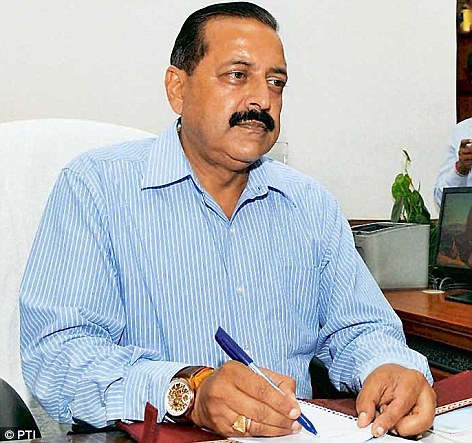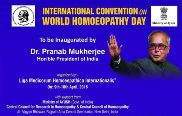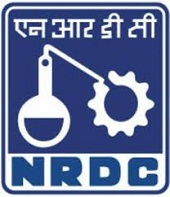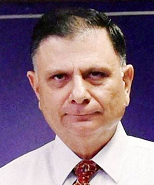New findings from large-scale studies of more than 3.6 million people who underwent screening for cardiovascular disease reveals that a person’s age and gender affects the prevalence of certain types of peripheral vascular diseases (PVD), and that diabetes is a major risk factor for developing these diseases, even in patients without heart disease.
As the U.S. population ages, more people are developing PVD, a common condition that affects the blood vessels. Up until now, there has been a lack of research to identify exactly which populations are at greatest risk for PVD, which can lead to heart attack, stroke and even amputation of the limbs.
The studies, led by researchers at NYU Langone Medical Center, were presented as poster presentations at the American College of Cardiology’s 65th Annual Scientific Session, held April 2-4, 2016 in Chicago.
“These findings point to very important differences between women and men, and older and younger individuals, when it comes to PVD,” says senior investigator Jeffrey S. Berger, MD, an associate professor in the Leon H. Charney Division of Cardiology at NYU Langone. “In addition, we found that diabetes is a strong risk factor for developing PVD, which may be a significant finding for physicians treating diabetic patients.”
PVD is a circulation disorder that affects blood vessels outside of the heart and brain, particularly the veins and arteries that supply blood to the arms and legs. Scientists have previously established the existence of a complex relationship between age and gender on the blockage of the arteries around the heart, known as coronary artery disease, but the roles of gender and age in PVD remained unclear until now.
Examining Three Specific Types of PVD
The NYU Langone investigators used data collected from more than 3.6 million individuals screened by Life Line Screening, a provider of community-based preventive health screenings. They focused on three different types of PVD: arterial disease in the lower extremities, called peripheral artery disease; carotid artery stenosis, which is blockage in the carotid arteries, the major blood vessels in the neck that supply blood to the brain, neck and face; and abdominal aortic aneurysm, an enlargement of the lower aorta, the major blood vessel that supplies blood to the body. They also looked for differences in disease prevalence based on a person’s gender and age, and on the odds of developing PVD for people with coronary heart disease, diabetes, or both.
Dr. Berger and his colleagues found that women have a significantly higher prevalence of peripheral artery disease, while men have a higher prevalence of carotid artery stenosis and a dramatically higher prevalence of abdominal aortic aneurysms.
The higher prevalence for peripheral artery disease, the researchers found, was most dramatic in younger women than in younger men compared to older women and older men. Similarly, the higher prevalence of carotid artery stenosis seen in men was more dramatic in older men than in older women. For abdominal aortic aneurysms, disease prevalence was similar across all age groups.
“These findings suggest that vascular diseases are not all the same, and that men and women have a different predisposition for one type of disease over another,” Dr. Berger says. “Sex-specific guidelines for PVD are important, and we are starting to realize that women and men need to be approached differently.”
Using the Data to Determine Links between PVD and Diabetes
The NYU Langone researchers then used the same Life Line Screening data set to look at the odds of developing PVD for people with either diabetes, heart disease, or both. It is well documented in previous studies that diabetes is a strong risk factor for heart disease. The medical community, however, did not know if people with diabetes have a similar risk as people with heart disease for peripheral artery disease or carotid artery stenosis.
Dr. Berger and his colleagues found that people diagnosed with diabetes but without known heart disease are at a very high risk for developing peripheral vascular disease of the lower extremities or the carotid artery. In addition, for people with both diabetes and coronary heart disease, there is an exponential risk of developing PVD, meaning the risk of developing PVD increases more than with either condition alone.
These findings, Dr. Berger says, highlights the need for physicians to think about PVD in people with diabetes even if they do not have known heart disease.
“Future studies need to investigate whether or not screening for vascular disease in the lower extremities and the carotid artery improves health and prevents adverse events in diabetics,” Dr. Berger says. “We know that if you have carotid artery stenosis, you’re at an increased risk for stroke, and we know that if you have lower extremity arterial disease, you’re at increased risk for significant impairment in your daily activities like walking, and even amputation. This is something that physicians need to keep in mind when seeing a diabetic patient in their practices.”
The NYU Langone researchers caution that the findings may not represent PVD prevalence in all men and women, or disease risk in people with diabetes. Specifically, the screening participants were self-selected, the measurements of PVD were taken once and not confirmed, and the study itself was observational with no cause-and-effect measured. The findings, the researchers say, need to be confirmed with a large prospective study that follows patients over a long period of time.
“What these studies show is the power of large data sets to provide insight into the prevalence of and risk factors for cardiovascular disease,” says Dr. Berger.
Nazir Savji, MD, will present poster “Association between Sex and Vascular Disease in Different Arterial Beds: A Population Database of over 3.6 Million People” on Saturday, April 2 at 9:30AM CT/10:30AM ET/2:30 PM UTC in Poster Area, South Hall A1. Dr. Savji’s and Dr. Berger’s contributors are Caron B. Rockman, MD, Adam Skolnick, MD, Yu Guo, MS, Harmony Reynolds, MD, Mark A Adelman, MD, and Judith Hochman, MD, all of NYU Langone.
Jonathan D. Newman, MD, will present the poster “Diabetes Mellitus Is a Coronary Heart Disease Risk Equivalent for Peripheral Vascular Disease” on Saturday, April 2 at 9:30AM CT/10:30AM ET/2:30 PM UTC in Poster Area, South Hall A1. Dr. Newman’s and Dr. Berger’s contributors are Caron B. Rockman, MD, Yu Guo, MS, Hua Zhong, PhD, Howard S. Weintraub, MD, Arthur Z. Schwartzbard, MD, and Mark A. Adelman, MD, all of NYU Langone, and Mikhail Kosiborod, MD, of Mount Sinai St. Luke’s Hospital.










